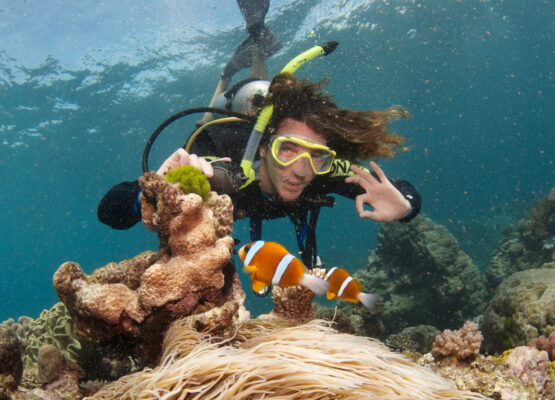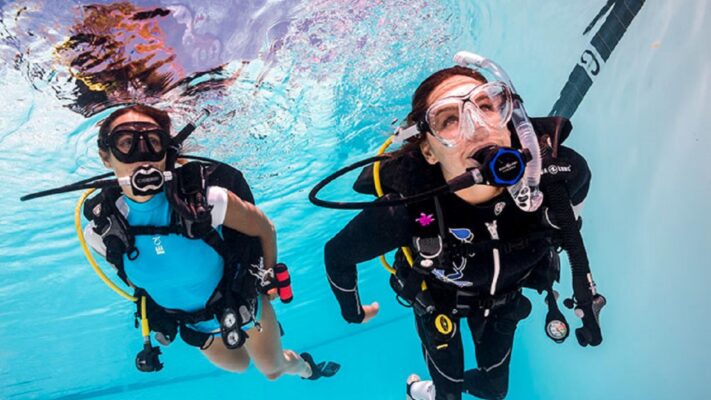Scuba diving is an exhilarating experience that allows you to explore the underwater world in a way that few other activities can. However, for beginners, this thrilling adventure may seem daunting and overwhelming. That’s why it’s essential to arm yourself with the right scuba diving tips to ensure your first dives are both safe and enjoyable. From understanding the equipment to mastering buoyancy control, there’s a wealth of knowledge that can enhance your diving experiences. In this article, we’ll delve deep into some crucial tips every beginner should know before embarking on their scuba diving adventures.

Understanding Your Equipment
Before you plunge into the depths of the ocean, it’s vital to familiarize yourself with the gear that will be your lifeline underwater. Understanding how each piece of equipment works not only enhances your comfort but also ensures your safety during dives.
The Importance of Proper Fit
When it comes to scuba diving equipment, one size does not fit all.
A proper fit is crucial for comfort and safety underwater. Whether it’s wetsuits, fins, or masks, gear should fit snugly without being restrictive. A wetsuit that’s too loose can allow water to flow in, making you cold; conversely, a wetsuit that’s too tight can restrict your movement and breathing.
Invest time in trying on different brands and styles of gear. Your local dive shop can offer personalized advice and fittings. Remember, comfort increases confidence, and confidence is paramount for new divers as they navigate their first few dives. A good fit enhances your ability to focus on the beauty around you rather than adjusting uncomfortable gear.
Learning the Functionality
Diving gear consists of various components, and understanding their functionality is crucial.
Let’s take a closer look at some key pieces:
- Buoyancy Control Device (BCD): This piece of equipment helps regulate your buoyancy underwater. Knowing how to inflate and deflate the BCD properly can help you maintain stability while diving. Always practice using your BCD in shallow waters before venturing into deeper territories.
- Regulator: This device delivers air from your tank to you. Familiarize yourself with its parts, ensuring you understand how to clear water from the mouthpiece if necessary. Practice taking breaths from your regulator on the surface before heading underwater.
- Dive Computer or Gauge: Monitoring your depth and time underwater is critical. Dive computers display this information, but it’s essential to understand how to read them. If using gauges instead, note key metrics like remaining air and decompression limits.
As you learn about each piece of equipment, remember that thorough knowledge gives you more control over your dive experience, reducing anxiety and enhancing enjoyment.
Maintenance and Care of Gear
Taking care of your scuba equipment is just as important as knowing how to use it.
Proper maintenance prolongs the life of your gear and ensures optimal performance. After each dive, rinse your equipment with fresh water to remove salt, sand, and debris. Pay special attention to your regulator and BCD since residue can cause malfunctions.
Store your gear in a cool, dry place away from direct sunlight. Regularly check for wear and tear, particularly on straps and seals, and service your equipment according to manufacturer guidelines. By treating your gear well, you not only ensure your own safety but also contribute to a responsible diving culture.
Mastering Buoyancy Control
One of the most fundamental skills in scuba diving is achieving and maintaining buoyancy control. It can make or break the diving experience, allowing you to float effortlessly among the coral reefs or glide along the ocean floor.

The Science Behind Buoyancy
Buoyancy is the upward force exerted by water, opposing gravity.
Understanding the concept of buoyancy is essential. The principle states that objects denser than water will sink, while those less dense will float. As a diver, your goal is to achieve neutral buoyancy, where you neither sink nor float excessively.
The primary factors affecting your buoyancy include body composition, gear weight, and the volume of air in your BCD and lungs. Beginners often struggle with buoyancy because they are not yet accustomed to these variables.
By practicing controlled breathing – inhaling deeply to rise and exhaling to descend – divers can fine-tune their buoyancy. Embrace the process, allowing for mistakes as you learn how to balance between floating and sinking effectively.
Techniques for Achieving Neutral Buoyancy
Several techniques can help you master buoyancy control.
- Breathing Control: Your breath is your best tool for buoyancy control. Practice inhaling deeply through your diaphragm to expand your lungs, which will increase your buoyancy, and then exhale slowly to descend.
- Weight Management: Having the right amount of weight is critical. Too much weight can make you sink too quickly, while too little can cause uncontrolled ascents. When gearing up, aim for a balanced distribution of weight across your body, ensuring that you can still swim comfortably.
- Stabilizing Body Position: Maintaining a horizontal position underwater can significantly affect your buoyancy. Keep your head in line with your spine and try to streamline your body. Adjusting your arms and legs can help fine-tune your position and buoyancy.
With practice, buoyancy control becomes second nature, allowing you to focus on enjoying the diverse marine life around you instead of worrying about sinking or floating.
The Role of Practice
Just like any skill, mastering buoyancy takes practice.
Find opportunities to practice in various settings, such as swimming pools or calm lagoons. Each environment offers unique challenges regarding buoyancy due to water conditions, visibility, and depth.
Many dive schools offer refresher courses specifically targeting buoyancy control. Participating in these courses puts you in a controlled environment, giving you the chance to refine your skills under professional supervision.
Remember, maintaining buoyancy control not only improves your experience but also protects delicate underwater ecosystems. By gliding gracefully through the water, you minimize physical contact with marine life and habitats.
Safety Considerations and Emergency Protocols
Safety is paramount in scuba diving, especially for beginners. Understanding potential risks and knowing emergency protocols can prepare you for unexpected situations.

Pre-Dive Safety Checks
Conducting thorough pre-dive safety checks is a crucial step before each diving session.
Begin by checking the functionality of your gear. Ensure your tank is full, connections are secure, and all equipment is functioning properly. Additionally, perform a buddy check with your diving partner. Confirm that your buddy’s gear is in good condition and that they have sufficient air supply.
Furthermore, review your dive plan together, covering entry points, maximum depths, and maximum dive times. Establish hand signals and emergency procedures to ensure communication underwater. These steps build trust and enhance safety awareness, setting a positive tone for the dive.
Recognizing Signs of Distress
Being aware of signs of distress in yourself and your buddy is essential for maintaining safety.
Common symptoms of distress include fatigue, panic, and difficulty equalizing pressure. If you notice any warning signs, communicate immediately; don’t hesitate to ascend to the surface if needed.
Learn how to recognize common issues faced by divers, such as nitrogen narcosis or decompression sickness. Familiarize yourself with the symptoms to spot potential problems early. Education and preparation can ultimately save lives.
Emergency Procedures
Having a solid grasp of emergency procedures is vital for handling unforeseen circumstances.
In the event of an emergency, stay calm. Panic can escalate situations unnecessarily. Instead, assess the problem and execute established protocols.
For instance, if you experience an out-of-air situation, signal your buddy and utilize their alternate air source. It’s crucial to remain close to your partner throughout the dive, ensuring that assistance is readily available.
Moreover, after surfacing, monitor both yourself and your buddy for any symptoms related to decompression sickness. If symptoms arise, seek medical attention promptly.
Understanding and practicing emergency protocols fosters a safety-oriented mindset, enabling you to act decisively in critical situations.
Environmental Awareness and Conservation
As a scuba diver, you become part of a larger ecosystem. Being mindful of environmental impacts and conservation efforts enhances your diving experience and promotes sustainable practices.
Understanding Marine Ecosystems
The underwater world is intricate and interconnected.
Each species, whether large or small, plays a role in maintaining the health of marine ecosystems. Recognizing this interdependence fosters appreciation for the fragile environments you explore.
During dives, take the time to observe marine life. By learning about the behaviors and habitats of various species, you’ll develop a deeper connection to the underwater world. Engaging in discussions with experienced divers and instructors can provide valuable insights into the complexities of marine ecosystems, enriching your understanding of what lies beneath the surface.
Practicing Responsible Diving
Responsible diving practices are integral to protecting marine environments.
One of the key principles is to avoid touching or disturbing marine life. While the urge to reach out and interact may be strong, many creatures are sensitive and can be harmed by human interaction. Instead, appreciate them from a distance, capturing memories through photographs rather than contact.
Additionally, be mindful of your buoyancy and positioning. Avoid resting on the ocean floor, as this can damage coral reefs and other delicate structures. Whenever possible, invest in eco-friendly dive operators who prioritize conservation and employ sustainable practices.
Supporting Conservation Efforts
As divers, we have the responsibility to advocate for marine conservation.
Engage in local conservation initiatives and volunteer opportunities. Many organizations work tirelessly to preserve marine ecosystems and educate the public about responsible diving practices. By participating in beach clean-ups, reef monitoring programs, or educational workshops, you contribute to the greater good while enriching your diving journey.
Moreover, spread awareness about the importance of marine conservation among fellow divers and friends. Share your experiences, insights, and passion for protecting our oceans. Every action, no matter how small, contributes to the ongoing fight for sustainability and preservation.

Conclusion
Embarking on your scuba diving journey can be one of the most rewarding experiences of your life. By equipping yourself with the essential scuba diving tips outlined in this article, you can ensure that your adventures are both safe and fulfilling. From understanding your equipment and mastering buoyancy control to prioritizing safety and advocating for conservation, these elements form the foundation of exceptional diving experiences.
As you continue to explore the underwater world, remember to immerse yourself in its beauty while respecting its fragility. With knowledge, confidence, and appreciation for the ocean, you’ll unlock the wonders of scuba diving, creating lasting memories that inspire you to dive deeper into this captivating realm. Happy diving!

